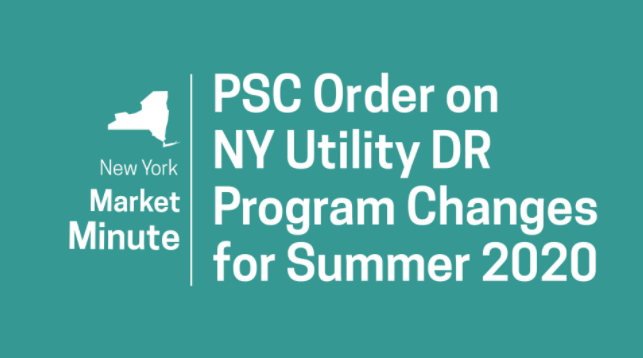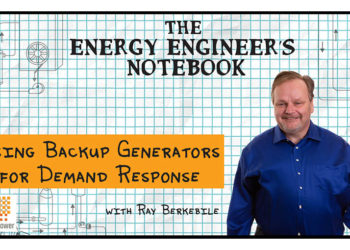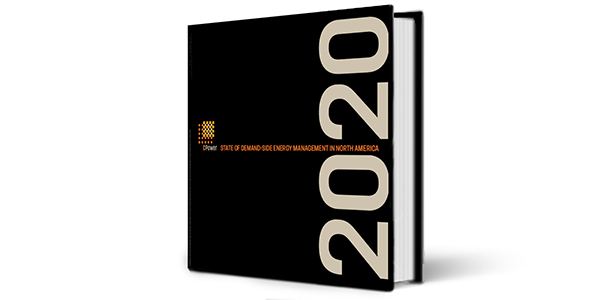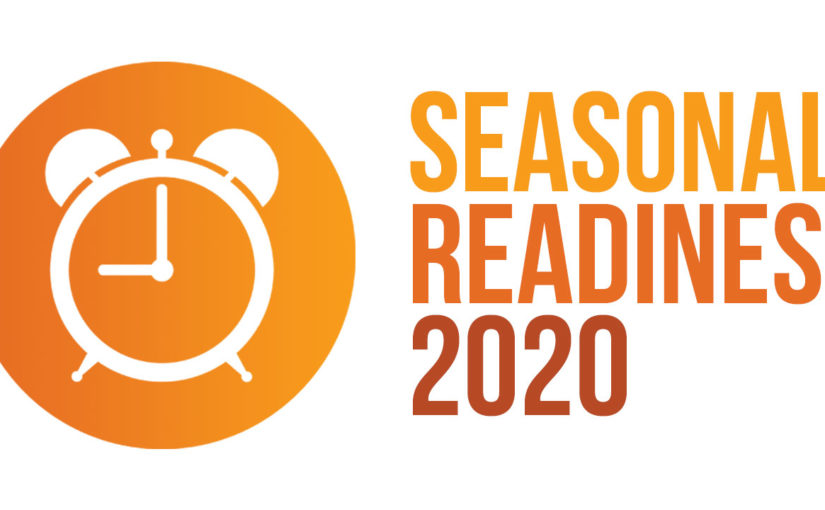NY’s ‘Change of Status’ Rule Poses Challenges, Opportunities for Commercial Real Estate Industry
Before the Covid-19 lockdown, Special Case Resource’s Change of Status Rule wasn’t much of a concern for commercial real estate organizations participating in demand response (DR) in New York City.
Way back in 2019, when most commercial buildings were at or near full occupancy, energy consumption was high as were participating curtailable loads that could be called by the NYISO in times of grid stress or unusually high energy prices.
What a difference a year makes.
Anyone in the commercial real estate sector participating in DR in 2020 should take notice. That’s because the revenue previously earned from successful DR curtailment could soon flow in the wrong direction as underperformance penalties are assessed on organizations that have committed to curtailing loads they no longer have due to low occupancy in their buildings.
Established in 2009 and updated in 2014, SCR’s Change of Status rule defines the criteria of a qualified change of load condition as defined in Section 2.17 of the NYISO Services Tariff. The rule’s intent has always been to negate credit for passive curtailment in cases where a participating organization no longer had load to curtail for demand response.
With occupancy in their buildings at record lows due to the Covid-19 lockdown, the Commercial Real Estate organizations in New York participating in lucrative demand response programs now find themselves in the crosshairs of a rule with steep penalties for non-compliance.
Here’s why:
Low building occupancy means low electrical consumption, resulting in a baseline for a given commercial building that will inevitably be far lower in 2020 during the lockdown than was established in 2019 when the building operated at normal occupancy.
Here’s the problem for commercial buildings in New York participating in demand response in 2020: the baseline in 2019 is the one that counts for this year’s DR participation.
Consider a commercial real estate organization that is currently operating at a fraction of last year’s occupancy and is enrolled in DR for the summer of 2020. If the organization’s summer load is less than 70% of its baseline established in 2019, the organization will likely face heavy penalties since they no longer possess enough load to curtail and will underperform in the Special Case Resource DR program.
Here is what DR participants in New York’s commercial real estate industry can do to mitigate the rule’s penalties:
Contact your curtailment service provider (CSP) and ask them to provide a plan for navigating SCR’s Change of Status rule. A good CSP should be able to outline a set of actions aimed to minimize underperformance risks and maximize possible DR revenues.
Such an outline of appropriate mitigation tasks might look like this:
- Analyze load data
- Review baselines
- Review performance factors
- Review previous seasons’ DR performances
- Identify and/or update curtailment opportunities
- Work with facility staff/engineering team to understand their energy systems operations and changes, occupancy changes, any other load changes, baseline changes
- Conduct engineering analysis, preparing, reviewing and updating curtailment plans, as needed
- Provide technical support and recommendations
- Provide enrollment recommendations for other DR programs that might fit the organization
In other words, a thorough CSP will work side-by-side with your organization and devise a customized mitigation plan based on your unique needs and capabilities.
Your CSP should work with you on a month-by-month basis to help you understand any enrollment changes and adjustments that need to be done to minimize the possible penalty risks associated with SCR’s Change of Status.
The Covid-19 pandemic and lockdown have levied enough uncertainties on the commercial real estate industry in 2020. Whether or not demand response participants will earn or owe money this season in New York doesn’t have to be one of them.
Peter Dotson-Westphalen and Arusyak Ghukasyan also contributed to this article.
PSC Order on NY Utility DR Program Changes for Summer 2020 – Market Minute (Video)
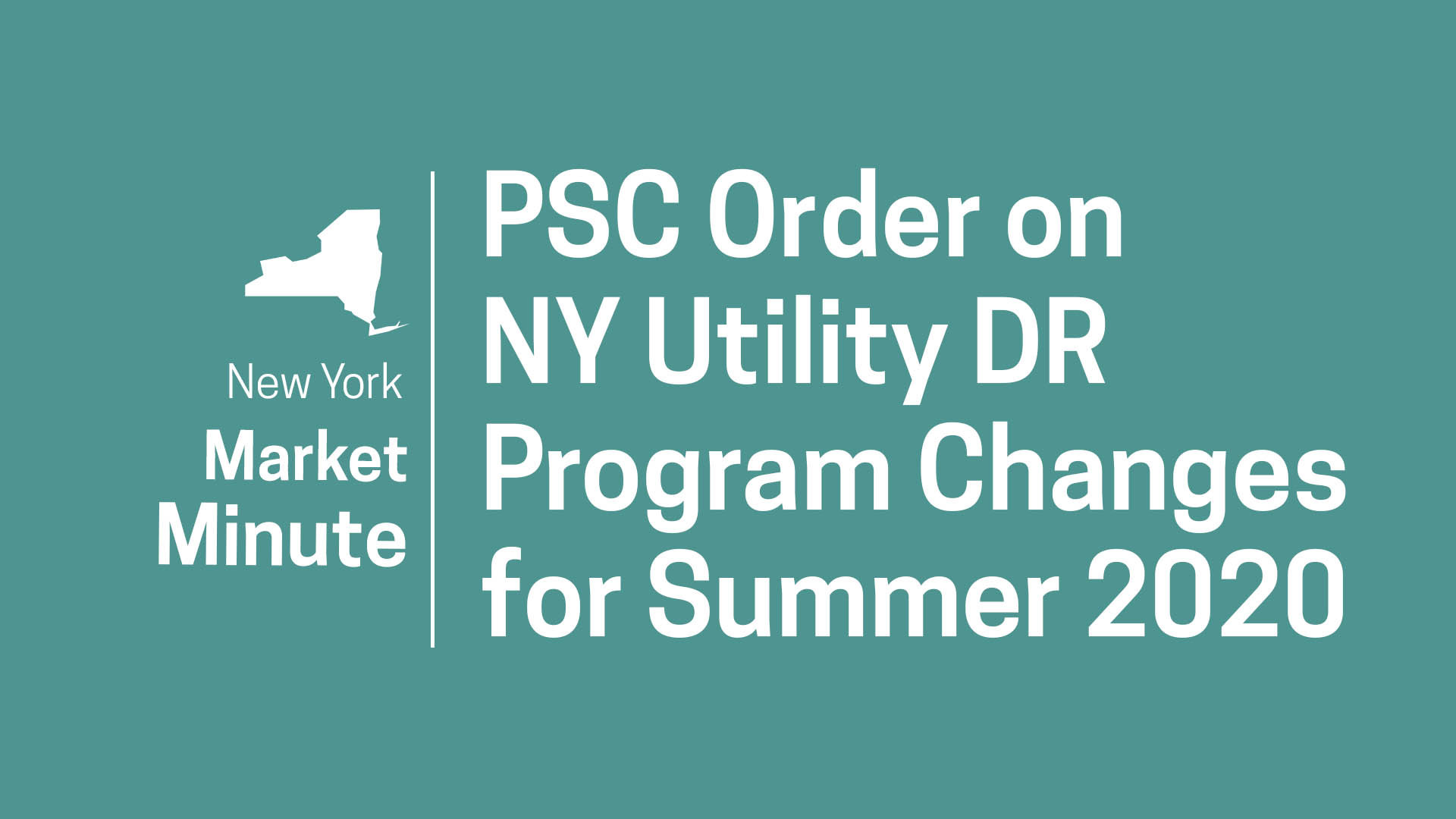
On May 14th, in response to COVID-19 related challenges and recommendations raised by stakeholders, the New York Public Service Commission issued an Order directing most of the utilities to implement several changes to their Dynamic Load Management (DLM) tariffs to become effective as of June 1st. These changes will impact the Commercial System Relief Program (CSRP) and the Distribution Load Relief Program (DLRP) for Summer 2020 and are intended to increase program flexibility for DR aggregators and participants.
The PSC Order directs the utilities to make the following changes to their DLM tariffs:
First, there will be an additional enrollment window to allow new participants to participate in the programs in July through September if enrollments are submitted by June 1st.
Second, for customers currently enrolled will have an opportunity to adjust their committed kW reduction amounts for July through September if this is submitted by June 1st.
Third, testing will occur only if an event has not already occurred, and the PSC has directed utilities to not administer a test before July 1st.
Lastly, for customers that have utility interval or AMI metering installed but have not been able to establish communications between the meter and the utility will be provisionally approved to participate, pending establishment of the necessary communications and providing that meter data for the CBL baseline calculations and test/event performance can be retrieved to assess program performance for settlement and payment.
These changes will be applicable to all utilities within New York, except for PSEG-LI. The PSC Order directs Department of Public Service staff to work with LIPA/PSEG-LI staff to see if similar changes can be implemented for their CSRP and DLRP programs for this program season.
If your organization is currently participating in one or both of the CSRP and DLRP programs in 2020, or had opted not to enroll in these programs due to operational and electric load changes for the season, you now have one more opportunity to enroll to participate in July through September, or to adjust your level of participation through adjusting your enrollment value.
If you have any questions or would like to enroll, or adjust your current enrollment amount, in the CSRP or DLRP programs by June 1st, or have any other New York energy question, contact CPower and we’ll help you in any way we can.
On May 14th, in response to COVID-19 related challenges and recommendations raised by stakeholders, the New York Public Service Commission issued an Order directing most of the utilities to implement several changes to their Dynamic Load Management (DLM) tariffs to become effective as of June 1st. These changes will impact the Commercial System Relief Program (CSRP) and the Distribution Load Relief Program (DLRP) for Summer 2020 and are intended to increase program flexibility for DR aggregators and participants.
The PSC Order directs the utilities to make the following changes to their DLM tariffs:
- Enrollment – an additional enrollment window has been added. New enrollments must be submitted by June 1st for participation in the CSRP/DLRP for July through September.
- Enrollment Adjustment – participants may adjust their committed kW to the CSRP and DLRP programs by submitting updated enrollments by June 1st, to become effective July 1st.
- Testing – utilities have been directed to not administer tests in their programs until July 1st at the earliest, and to not administer a test if an event has already been called.
- Metering – customers that have utility interval or AMI metering installed but have not been able to establish communications between the meter and the utility will be provisionally approved to participate, pending establishment of the necessary communications and providing that meter data for the CBL baseline calculations and test/event performance can be retrieved to assess program performance for settlement and payment.
These changes will be applicable to all utilities within New York, except for PSEG-LI. The PSC Order directs Department of Public Service staff to work with LIPA/PSEG-LI staff to see if similar changes can be implemented for their CSRP and DLRP programs for this program season.
If your organization is currently participating in one or both of the CSRP and DLRP programs in 2020, or had opted not to enroll in these programs due to operational and electric load changes for the season, you now have one more opportunity to enroll to participate in July through September, or to adjust your level of participation through adjusting your enrollment value.
If you have any questions or would like to enroll, or adjust your current enrollment amount, in the CSRP or DLRP programs by June 1st, or have any other New York energy question, contact CPower and we’ll help you in any way we can.
CPower Experts Share Insights Into North America’s Energy Markets in 2020 (Webinar)

Watch the latest webinar from CPower and SED
New York’s Rule 222 for Distributed Generation (Video)

Fill out the form below and your question may be the subject of an Energy Engineer’s Notebook episode.
(If your question isn’t selected for an episode, a CPower engineer will get back to you with an answer.)
2020 State of Demand-Side Energy Management in North America
Rule 222: NYS DEC cracks down on NOx emissions from commercial generators
The New York State Department of Environmental Conservation (NYSDEC) has approved a new regulation called 6 NYCRR Part 222 Distribution Generation Sources. The proposed rule would replace the March 1, 2017 adopted Part 222, which was challenged in the Supreme Court in the County of Albany and stayed.
Controlling nitrogen oxide emissions from distributed generation sources is Rule 222’s essential goal. The proposed rule will apply only in the New York City metropolitan area as defined at 6 NYCRR Part 200.1(au), which covers New York City, Westchester, Rockland, and Nassau counties.
DG sources enrolled in demand response programs sponsored by the NYISO or electric utilities as well as sources used during times when the cost of electricity supplied by utilities is high (defined separately in Part 222 as price-responsive “economic” generation sources) are subject to the new rule.
Rule 222 was approved on March 11, 2020, and will be implemented effective May 1, 2021. Both new and existing distributed generation sources that intend to participate in DR will need to notify the NYSDEC by March 15, 2021 or 30 days prior to beginning participation, whichever is later. That said, organizations in the New York City metro area that use a stationary generator for demand response should contact CPower since the rule could ultimately affect their ability to earn revenue by helping the grid reduce load in times of stress or high economic prices.
Any organization curious to learn more about Rule 222 and whether or not their generator is affected should contact a licensed curtailment service provider.
This post was excerpted from the 2020 State of Demand-Side Energy Management in North America, a market-by-market analysis of the issues and trends the experts at CPower feel organizations like yours need to know to make better decisions about your energy use and spend.
CPower has taken the pain out of painstaking detail, leaving a comprehensive but easy-to-understand bed of insights and ideas to help you make sense of demand-side energy’s quickly-evolving landscape.
Seasonal Readiness 2020
Webinar: State of the New York Energy Market (SOTM Series)
SOTM 2019 Webinar Series
The Push for Renewables in New York
One of the Reforming Energy Vision’s primary goals includes renewable sources generating 70% of the state’s electricity by 2030. To do that, the New York grid seeks to implement distributed energy resources into its fuel mix.
How might New York’s energy market be redesigned to incorporate DERs like solar, energy storage, and others?
NYISO’s proposed changes meet opposition
In 2018, the NYISO proposed changes to the ICAP Capacity Market for how long a resource must be able to run to be eligible to be paid the full value of capacity.
Using the results of a study on energy-limited resources by GE Consulting (GE), the NYISO initially proposed that resources would need to be able to run for 8-hours in order to obtain full capacity value. The NYSIO then proposed it would allow resources that can perform for shorter durations to be paid a fractional portion of the capacity value as follows:
8-hrs=100%
6-hrs = 75%
4-hrs = 50%,
2-hrs =25%
A group of demand response and energy storage providers, including CPower, challenged the GE study’s findings.
A formal review of the GE study by Astrapé Consulting revealed “several flaws in the assumptions and methodology that influenced the study results to show a decreased capacity value for shorter-duration resources than would likely be expected.”
Skepticism of the GE study’s results quickly spread among key New York energy stakeholders, including DR providers, energy storage developers, C&I customers, environmental groups and various trade associations.
These stakeholders submitted a joint letter to the NYISO executive team and board of directors requesting “all market design changes relating to the GE Study results (including any changes to the SCR program) be removed from the DER Roadmap.”
So where does that leave New York?
Potential changes in the New York Energy Market
While there is an ongoing debate about the future of New York’s capacity market, there are no major regulations or market design changes yet announced to take effect in 2019. That could change pending the outcome of an April vote (more than a month away as of this writing) among New York’s energy stakeholders.
That means, for example, the Special Case Resource (SCR) demand response program will continue to operate under its current parameters, including a four-hour duration requirement.
As far as the DER wholesale market goes, New York is in wait-and-see mode. DERs, especially battery storage, and renewable energy sources are a key component of the REV’s drive toward New York’s energy future.
New York, like several other US energy markets, is faced with the question of how to value distributed energy resources in its marketplace.
The question of DER valuation is being debated by the NYISO and various energy stakeholders in the state. As of this writing, there is no definitive timetable for when the debate will conclude and regulations for DER valuation will be enacted.
Energy Storage
New York has taken its place alongside California, New Jersey, and Massachusetts as a first-mover in establishing energy storage targets.
In June 2018, Governor Cuomo announced an energy storage roadmap that set New York’s storage target for 1,500 MW by 2025. According to the roadmap, that ambitious goal could elevate to 3,000 MW by 2030.
At the state level, New York has recognized the need to fund storage projects instead of subsidizing them. Last June, Governor Cuomo committed $200 million from the New York Green Bank to fund storage investments that will help integrate renewable energy onto New York’s grid.
Funding opportunities for storage abound with plenty of state money being made available for storage development.
But without certainty on the wholesale market side and established rules concerning dual participation between markets, meeting the state’s ambitious storage goals will continue to have its challenges.
The key energy players in New York will need to resolve these issues before any substantial investment from the private sector will take a position on energy storage. The NYISO is targeting April 17, 2019, for a vote on market design to accommodate DER integration into its wholesale markets.
This post was excerpted from the 2019 State of Demand-Side Energy Management in North America, a market-by-market analysis of the issues and trends the experts at CPower feel organizations like yours need to know to make better decisions about your energy use and spend.
CPower has taken the pain out of painstaking detail, leaving a comprehensive but easy-to-understand bed of insights and ideas to help you make sense of demand-side energy’s quickly-evolving landscape.




